The last line of defence. In a nutshell, that is what a goaltender has, is and will always be. No matter the era they played in, the job has always remained the same. See shot, stop shot…rinse and repeat. Sounds simple enough, now if only it were that easy. Off we go to the 1960s and the days of when the 30-something netminder ruled the day and the man who was known as “Mr. Goalie” led the way.
#5 – Ed Giacomin
For a guy who spent the first half of the decade tending twine for the Providence Reds in AHL, the legendary Ed Giacomin managed to put together an impressive body of work during the 1960s. After getting his shot at the show with the New York Rangers in 1965-66 and delivering mixed results, no netminder in hockey would play more over the subsequent four seasons than the soon-to-be fan favourite.
After missing the playoffs in seven of the previous eight seasons, the Blueshirts started to climb up the standings from the moment Giacomin took over the crease on a full-time basis and they would go on to make the postseason nine straight years. Despite playing in front of a team that still had its share of holes in the lineup, the native of Sudbury, Ontario led the league in shutouts in 1966-67 and again in 1967-68.
In fact, he would go on to blank opponents 30 times over those four years, trailing only Glenn Hall (51) by the end of the decade. Giacomin finished fifth in wins with 146 and essentially went from borderline NHLer to a perennial All-Star. Year in and year out, the Rangers No. 1 was the model of consistency and his acrobatic style of play made him a joy to watch. As did his tendency to wander from his net to play the puck…something which was rarely done in those days.
Outside of Jacques Plante, no other goaltender dared to leave their crease with the kind of frequency the five-time 30-game winner did. But then again, none of them could handle the puck nor skate half as well as Giacomin. Though he never enjoyed the team success others on this list did, it was no fault of his own. At the time, there was arguably no goalie in hockey who was asked to carry his team as much as the future Hall of Famer and to this day remains one the most popular players to ever worn a Rangers sweater.
#4 – Lorne “Gump” Worsley
Of all the netminders who saw extensive playing time during the 1960’s, none had as peculiar a ride to stardom than Lorne Worsley. Three years of full-time duty as a member of the underwhelming New York Rangers. Followed by seven years with the Montreal Canadiens, which would see him spend time in the AHL, battle multiple injuries, win a pair of Vezina Trophies and help the Habs to four Stanley Cup titles.
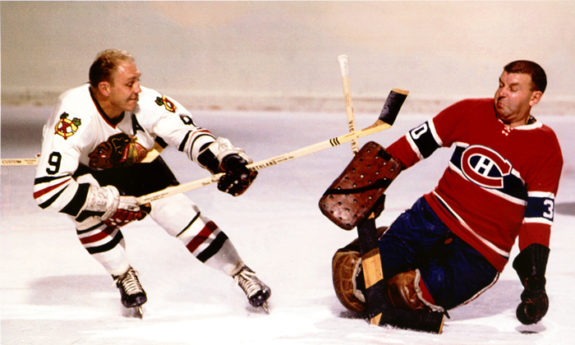
Only Johnny Bower and Glenn Hall appeared in more games (366) and won more often (161) over the course of the decade, than the man who was known to hockey fans everywhere as “Gump”. While his tenure with the Canadiens was the high point of Worsley’s career, he tended to save his best for the post-season. The 38-year old followed up his fantastic 1967-68 campaign, with a perfect 11-0 run through the playoffs and lowered his 1.98 GAA to an absurd 1.88 in backstopping Montreal to yet another championship.
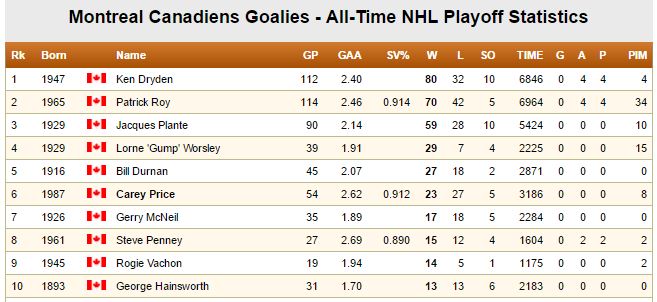
He finished his days in Le Bleu-Blanc-Rouge with a 29-7 record and 1.91 GAA in 39 playoff appearances and still sits fourth in franchise playoff wins and first with an eye-popping .744 winning percentage. To no great surprise, Worsley would eventually find his way into the Hockey Hall of Fame and it was his performance during the sixties that ultimately put him over the top and allowed him to gain enshrinement in 1980.
#3 – Jacques Plante
Heading into the 1960-61 season, Jacques Plante already had five Vezina Trophies, 227 wins, a career 2.11 GAA, 47 shutouts, five selections to the year-end All-Star team, five All-Star game appearances and six Stanley Cup championships on his resume. For most almost anyone else, that would be quite the career but the future Hall of Famer still had plenty to give after his 31st birthday.
Plante played with the Montreal Canadiens, New York Rangers and St. Louis Blues over the course of the decade and was still among the league leaders in games played (333), wins (155) and goals against average (2.68). This despite having retired following the 1964-65 season and not playing at all for the next three years, before being convinced to come out of retirement to join the Blues for the 1968-69 campaign….at the age of 39.
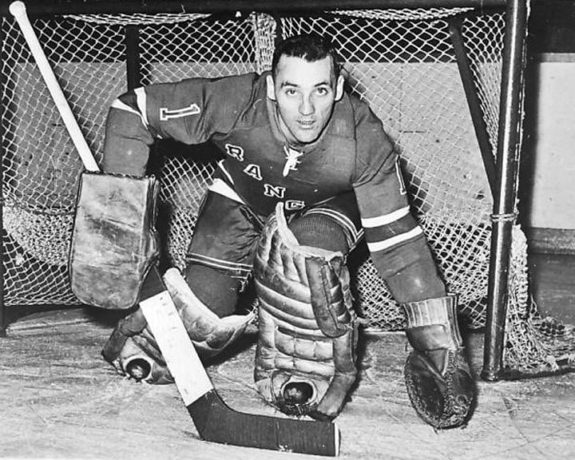
He teamed with Glenn Hall to win the Vezina that season with his league-best 1.96 GAA in 37 appearances. It was Plante’s second such honour of the decade, as he also took home the trophy following the 1961-62 season. That year saw him pick up 42 victories while posting a 2.37 GAA and playing in all 70 of the Habs’ regular season games. He was rewarded with the Hart Trophy for his efforts, a feat no other goalie would accomplish until Dominik Hasek in 1996-97.
#2 – Johnny Bower
There has arguably never been a career in the history of the sport that was quite like that of Johnny Bower. After spending the better part of the first 13-years of his pro career in the minor leagues, the future Hall of Famer would not get his shot at being an NHL regular until the tail end of the 1950s with the Toronto Maple Leafs. This despite winning back-to-back-to-back MVP honours in the AHL, something no goaltender had ever done before or since.
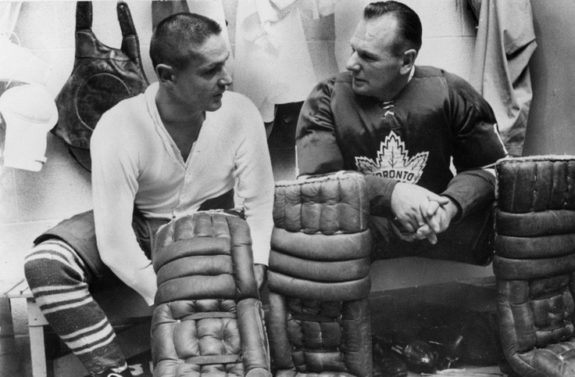
Over the course of the next eleven years, the fan favourite would help the Blue and White to three consecutive Stanley Cup titles and play a supporting role in a fourth. Next to Hall, the Saskatchewan native was the league’s busiest (370 games played) and winningest (170) netminder during the sixties. His 2.43 goals against average was tops in hockey and led to him taking home a pair of Vezina Trophies…the second coming in tandem with Terry Sawchuk.
Long considered to be among the hardest-working goalies in history, Bower was loved by teammates for his efforts. Luckily for them, he continued to improve with age. Something which was not lost on legendary Maple Leafs bench boss Punch Imlach, who implied in his autobiography the veteran guardian was able to “overcome the aging process” thanks to his “wanting to be the best so badly.” High praise indeed and certainly justified for one of the finest netminders to have ever played the game.
#1 – Glenn Hall
When one considers Glenn Hall already had seven full seasons under his belt heading into the 1960-61 campaign, it becomes all the more remarkable to comprehend what he went on to accomplish over the next ten-year stretch of his remarkable career. The first seven of those years saw him add to his legend with the Chicago Black Hawks, while the final three were spent with the expansion St. Louis Blues.
From a statistical standpoint, the future Hall of Famer was in a class all his own throughout the decade. Outside of his 2.48 GAA, which was the second-best mark during the sixties, Hall dominated all other major goaltending categories. His 516 appearances and 30,243 minutes played were “a mere” 146 and 9,147 more than the next closest man on the list. He recorded 240 victories, no other netminder managed to surpass 170, and his 51 shutouts were second to none.
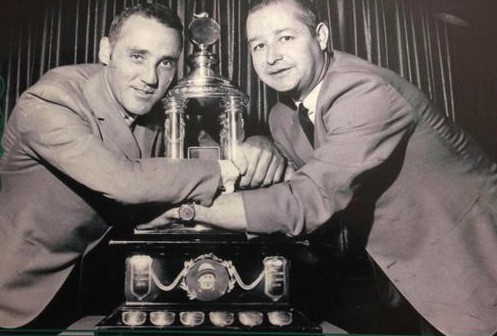
Not surprisingly, the native of Humboldt, Saskatchewan was honoured on multiple occasions over the course of the decade. Named to the season-end All-Star Team on seven separate occasions, (five first-team and two second-team selections), nine All-Star game appearances, three Vezina Trophies and a Conn Smythe Trophy for good measure. Hall backstopped the Hawks to the franchise’s first Stanley Cup championship in 23 years in 1961 and helped the Blues to the finals in 1968 at 37-years of age. Not too shabby for the so-called “back-half” of a career.
